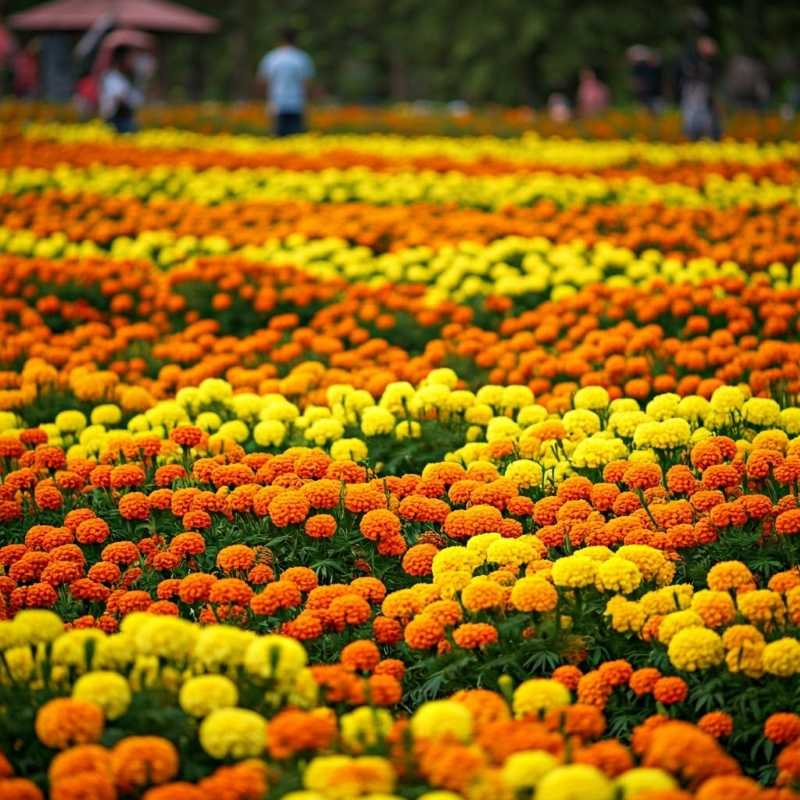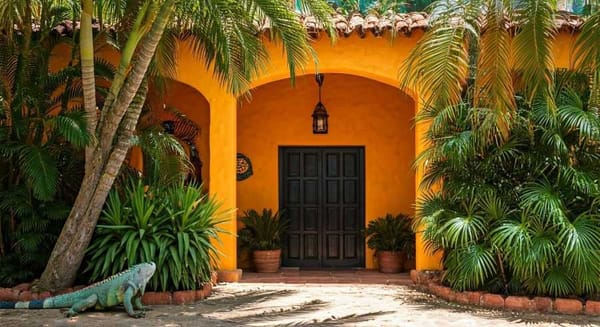How Mexico Accidentally Became the Saudi Arabia of Marigolds
Mexico dominates the global marigold scene with 35 registered varieties, a legacy dating back to pre-Hispanic times. These versatile flowers, ranging from bold yellows to whites, aren't just Day of the Dead decorations - they're agricultural powerhouses used in medicine, cosmetics, and food.

If there’s one thing that can be said about Mexico, it’s that it knows how to throw a party, especially when it comes to honoring the dead. And central to this yearly spectacle of colors and memories is the marigold, known locally as cempasúchil. You might think, “It’s just a flower.” But here in Mexico, the cempasúchil is practically royalty. To be honest, I’m rather inclined to agree. With a staggering 35 of the world’s 58 varieties blooming exclusively in Mexico, this flower is not only entrenched in the nation's culture but stands as a botanical badge of honor.
Before conquistadors set foot on this land, the marigold was already holding court. Since pre-Hispanic times, Mexicans have been obsessed with this bloom, and not just for decoration. Oh no, the marigold had purpose. For centuries, it’s been written into the fabric of Mexican civilization—appearing in gardens, growing wild, and celebrated in songs and poems long before we had hashtags and social media filters. Ancient records, etched and painted by artists long gone, tell us that marigolds sprouted spontaneously but were also grown with great care, like a prized family pet or a bottle of the finest tequila.
Fast forward to today, and this flower still reigns supreme. Every October and November, marigolds appear like magic across the country, draped on altars and marking pathways. They’re not just props; they’re symbols, meant to guide spirits back to their families during Día de los Muertos, or Day of the Dead, an event so famous it could make Halloween look like a damp Sunday in Croydon.
Let’s talk about the colors. Marigolds aren't monochrome; they don’t just settle for “orange” and call it a day. These flowers come in an entire symphony of hues—burnished golds, buttery yellows, fiery reds, and even the odd shock of white. And that’s just the beginning. Imagine walking through a marketplace at dawn, surrounded by baskets overflowing with every shade of marigold you could dream of. It’s enough to make anyone wax poetic or at least reach for their camera.
These colors have specific significance. The golden yellows are traditional, meant to mimic the sun, guiding the spirits. Reds and whites are newer arrivals, but they’ve become essential for the bouquets and arrangements that adorn both humble and grand altars. Whether in bunches or delicate pots, the sheer variety is overwhelming and speaks to a love affair between Mexico and the cempasúchil that has endured for hundreds of years.
Now, I realize some of you may be the fact-checking type. You’ll want to know all about these 35 registered varieties. Imagine the work that’s gone into documenting these. Some of the names are as colorful as the petals themselves: Acuexcomac, Tzapingo, Chapingo, and so on. It’s as if they belong in an ancient myth, not a catalog. This national registry, maintained by the National Catalogue of Plant Varieties under Mexico’s National Seed Inspection and Certification Service, isn’t just a dusty book on a shelf. No, it’s a living record of what can only be described as the national flower of Día de los Muertos.
These varieties aren’t just for show, either. They’re grown by small-scale farmers, by open-air producers who’ve likely been working the same fields for generations. Their names—Toluca, Teotihuacan, Huejutla—read like a tour through the country’s cultural heartland. Each name represents a unique blend of petals and fragrance, preserved by the farmers who cultivate them year after year.
More Than Just a Pretty Face
These marigolds aren’t just hanging around looking pretty. They’re a powerhouse, contributing to industries far beyond the local markets. Researchers are tapping into the genetic makeup of these blooms, looking to develop varieties not just for decoration but for medicine, cosmetics, and even food for animals and people alike. The humble marigold, it seems, has ambitions beyond its traditional role. And it’s a genius move. With Mexico’s agricultural and research institutes on the job, the potential here is vast. Imagine marigold-infused beauty products, or perhaps even culinary uses that could go global. You may even end up eating them, whether you know it or not.
Numbers, anyone? The figures from the Agri-Food and Fisheries Information Service are jaw-dropping. Mexico produces an estimated 21,355 tons of marigolds annually. That’s 518,712 bunches of flowers, if you’re counting. And for the home gardeners, that’s a tidy two million-plus plants. Imagine the hectares of land ablaze with these golden blooms, each bundle a tiny piece of Mexican heritage, waiting to be bought, placed on an altar, or perhaps turned into something more modern—like a skincare serum or a nutritional supplement.
Ultimately, the marigold is a testament to Mexico’s sense of identity, tradition, and ingenuity. This flower, with its petals aglow and scent wafting through every town square, embodies the country’s soul. It’s not just a flower; it’s a symbol, a commodity, and a cultural treasure. So, next time you’re in Mexico during the Day of the Dead, spare a thought for the humble cempasúchil. It’s earned its place in history, its rightful spot in the catalogs, and maybe—just maybe—a place in your heart too.




